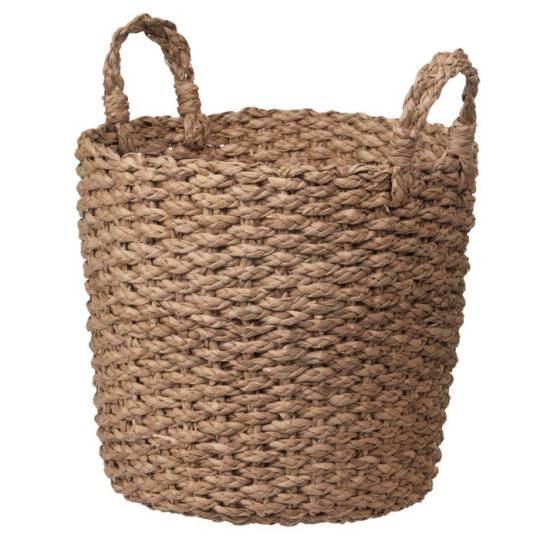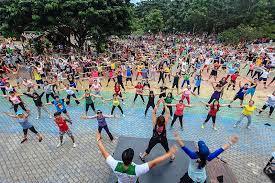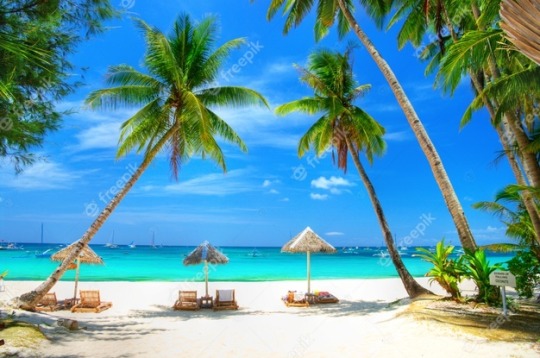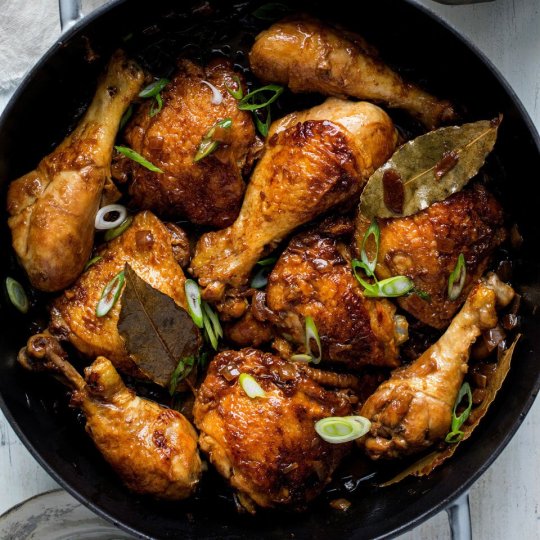Text

8.) SPORT IN THE PHILIPPINES
ARNIS
Arnis, also known as Kali or Eskrima/Escrima, is the national martial art of the Philippines. The three are roughly interchangeable umbrella terms for the traditional martial arts of the Philippines ("Filipino Martial Arts", or FMA), which emphasize weapon-based fighting with sticks, knives, bladed weapons, and various improvised weapons, as well as "open hand" techniques without weapons.
There have been campaigns for arnis to be nominated in the UNESCO Intangible Cultural Heritage Lists, along with other Philippine martial arts. As of 2018, UNESCO has inscribed nine martial-arts–related intangible heritages.
0 notes
Text

7.) DIY IN THE PHILIPPINES
ABACA BASKET
Basket with handles made from Abaca. Abaca is a tree similar to the banana tree, and is naturally brown in colour. Manufactured in the Republic of the Philippines, by hand. The material is dried in the sun and then crafted into the baskets in different styles and sizes. It takes about one day to make a basket. The family business in the Republic of the Philippines supplies about 2 500 families by working directly with the manufacture or are producers of raw materials like Abaca, brown grass and bast. The factory is located 50 kilometers south of Manila.
0 notes
Text

6.) FITNESS IN THE PHILIPPINES
ZUMBA DANCE
Zumba is a fitness program that combines Latin and international music with dance moves. Zumba routines incorporate interval training — alternating fast and slow rhythms — to help improve cardiovascular fitness.
Zumba is an aerobic activity that can count toward the amount of aerobic activity recommended for most healthy adults by the Department of Health and Human Services.
The guidelines recommend at least 150 minutes of moderate aerobic activity or 75 minutes of vigorous aerobic activity a week, or a combination of moderate and vigorous activity. But even small amounts of physical activity are helpful. Being active for short periods of time throughout the day can add up to provide health benefits.
Aerobic exercise can reduce health risks, help maintain a healthy weight, strengthen your heart and boost your mood. If you enjoy Zumba, you're also more likely to do it regularly and experience its benefits as an aerobic exercise.
As with any exercise, if a certain movement or position hurts, try to modify the workout to avoid the activities that are painful.
0 notes
Text

5.) LIFESTYLE IN THE PHILIPPINES
DAILY LIFE
Filipinos love going out, socializing and meeting friends and family members. One of the common places of meeting for people in this country are the markets. Most of the local markets in the country are generally crowded and colorful. Sellers are always up for a conversation or a friendly banter, even if you don’t buy from them. The general atmosphere is of casualness and warmth. Communication is not a problem because most Filipinos understand and can speak English.
People in Philippines also like to go out to eat at restaurants every once in a while and a meal at an inexpensive restaurant can cost somewhere around 120 Pesos whereas a meal at a mid-range restaurant can cost 700 P. Drinks are cheap in this country and this is evident from the fact that 0.33 litre of imported beer costs 80 Pesos.
Filipinos also spend on sports and leisure for entertainment. Joining a fitness club can cost an adult 1535 Pesos per month whereas a cinema ticket for one person costs 170 P.Filipino lifestyle is a perfectly blended mix of cultures of Malay, Indonesian, and aboriginal, Chinese, Indian, Japanese, Spanish and even American.
0 notes
Text

4.) INSTRUMENT IN THE PHILIPPINES
DABAKAN
The dabakan is a single-headed Philippine drum, primarily used as a supportive instrument in the kulintang ensemble. Among the five main kulintang instruments, it is the only non-gong element of the Maguindanao ensemble.
The dabakan is frequently described as either hour-glass, conical, tubular, or goblet in shape Normally, the dabakan is found having a length of more than two feet and a diameter of more than a foot about the widest part of the shell. The shell is carved from wood either out of the trunk of a coconut tree or the wood of a jackfruit tree which is then hollowed out throughout its body and stem. The drumhead that is stretched over the shell is made out of either goatskin, carabao skin, deer rawhide, or snake/lizard skin, with the last considered by many dabakan practitioners as the best material to use. The drumhead is then fastened to the shell first via small metal wire and then using two hoops of rattan very tightly to allow the rattan sticks to bounce cleanly. Artists, especially the Maranao, would then carve the outside of the shell with elaborate and decorative okkil patterns.
0 notes
Text

3.) TRAVEL IN THE PHILIPPINES
BORACAY
Boracay is a tropical island surrounded by stunning white sand beaches and clear blue waters located about an hour's flight from Cebu or Manila just off the larger Philippines island of Panay.
For beach connoisseurs, Boracay competes with the best beaches in more popular destinations such as the Caribbean and the South Pacific as well as neighboring Thailand, Malaysia and Indonesia. Tourists will appreciate water sports and activities such as sailing, windsurfing, snorkeling, diving and jet skiing. The fun in Boracay doesn't end when the sun sets. The nightlife pulsates with many bars and restaurants serving food, drink and fun until the wee hours of dawn.
Boracay is a small island in the central Philippines. It's known for its resorts and beaches. Along the west coast, White Beach is backed by palm trees, bars and restaurants. On the east coast, strong winds make Bulabog Beach a hub for water sports. Nearby, the observation deck on Mount Luho offers panoramic views over the island. Offshore, coral reefs and shipwrecks are home to diverse marine life. Boracay suffered from overdevelopment and inherited a negative reputation for dodgy nightlife and major environmental concerns. The government closed the island for six months and the island underwent an extensive facelift. Since reopening in October 2018, the island has had tougher rules and regulations and a limit to the number of tourists allowed. Visitors must have a hotel pre-booked before getting on the boat to Boracay. Among the rules are bans on eating or drinking on the beach, smoking, fire dancing and commercial sandcastles. Touts will offer visitors a massage, boat ride, parasailing, kitesurfing, sail boating, hair braiding, island hopping and henna tattoo every 20 steps on the beach's "sidewalk" path.
0 notes
Text

2.) FOOD IN THE PHILLIPINES
ADOBO
Philippine adobo (from Spanish adobar: "marinade," "sauce" or "seasoning" / English: /əˈdoʊboʊ/ Tagalog pronunciation: [ɐdobo]) is a popular Filipino dish and cooking process in Philippine cuisine that involves meat, seafood, or vegetables marinated in vinegar, soy sauce, garlic, bay leaves, and black peppercorns, which is browned in oil, and simmered in the marinade. It has occasionally been considered the unofficial national dish in the Philippines.
Adobong dilaw ("yellow adobo"), which uses kalawag (turmeric) to provide the yellow colouring as well as adding in a different flavour, can be found in the Visayas and Mindanao regions.
Adobo has been called the quintessential Philippine stew, served with rice both at daily meals and at feasts. It is commonly packed for Filipino mountaineers and travelers because it keeps well without refrigeration. Its relatively long shelf-life is due to one of its primary ingredients, vinegar, which inhibits the growth of bacteria.
0 notes
Text

1.) FASHION IN THE PHILIPPINES
BARO'T SAYA AT BARONG TAGALOG
The baro’t saya or baro at saya (literally "blouse and skirt") is a traditional dress ensemble worn by women in the Philippines. It is a national dress of the Philippines and combines elements from both the precolonial native Filipino and colonial Spanish clothing styles.It traditionally consists of four parts: a blouse (baro or camisa), a long skirt (saya or falda), a kerchief worn over the shoulders (pañuelo, fichu, or alampay), and a short rectangular cloth worn over the skirt (the tapis or patadyong).
The baro't saya has multiple variants, including the aristocratic traje de mestiza (also called the Maria Clara or Filipiniana); the Visayan kimona with its short-sleeved or poncho-like embroidered blouse paired with a patadyong skirt; as well as the unified gown known as the terno, and its casual and cocktail dress version, the balintawak.[1] The masculine equivalent of baro't saya is the barong tagalog.
The barong tagalog (lit. "Tagalog dress"), more commonly known simply as barong (and occasionally baro), is an embroidered long-sleeved formal shirt for men and a national dress of the Philippines. Barong tagalog combines elements from both the precolonial native Filipino and colonial Spanish clothing styles. It is traditionally made with sheer textiles (nipis) woven from piña or abacá; although in modern times, materials like silk, ramie, or polyester are also used. It is used in special occasions in the Philippines.
It is a common formal or semi-formal attire in Filipino culture, and is worn untucked over an undershirt with belted trousers and dress shoes. Baro't saya is the feminine equivalent of barong tagalog, with the Maria Clara gown being the formal variant of the latter. Barong tagalog was also known as camisa fuera ("outer shirt") in Philippine Spanish.
8 notes
·
View notes